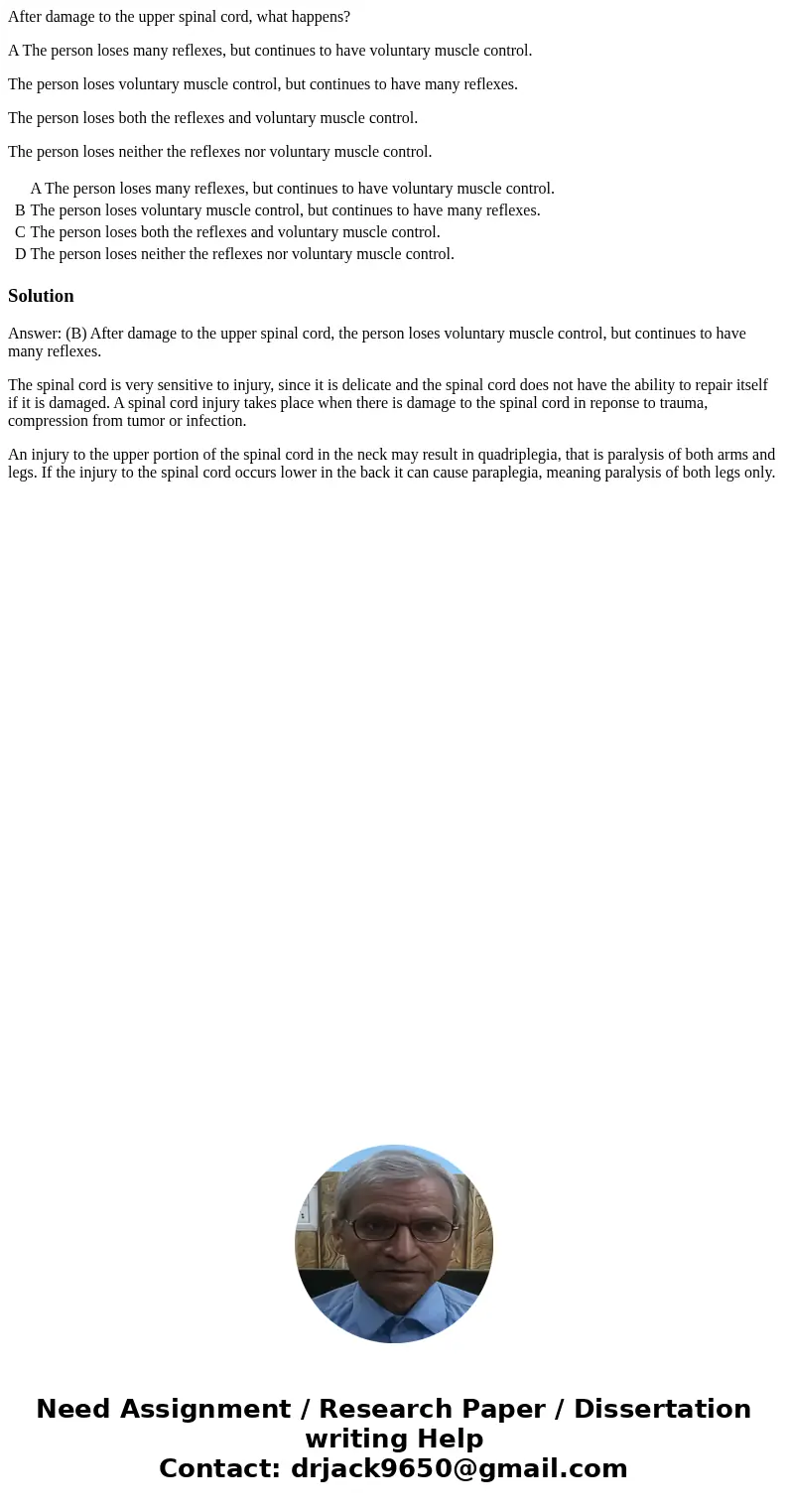After damage to the upper spinal cord what happens A The per
After damage to the upper spinal cord, what happens?
A The person loses many reflexes, but continues to have voluntary muscle control.
The person loses voluntary muscle control, but continues to have many reflexes.
The person loses both the reflexes and voluntary muscle control.
The person loses neither the reflexes nor voluntary muscle control.
| A The person loses many reflexes, but continues to have voluntary muscle control. | ||
| B | The person loses voluntary muscle control, but continues to have many reflexes. | |
| C | The person loses both the reflexes and voluntary muscle control. | |
| D | The person loses neither the reflexes nor voluntary muscle control. |
Solution
Answer: (B) After damage to the upper spinal cord, the person loses voluntary muscle control, but continues to have many reflexes.
The spinal cord is very sensitive to injury, since it is delicate and the spinal cord does not have the ability to repair itself if it is damaged. A spinal cord injury takes place when there is damage to the spinal cord in reponse to trauma, compression from tumor or infection.
An injury to the upper portion of the spinal cord in the neck may result in quadriplegia, that is paralysis of both arms and legs. If the injury to the spinal cord occurs lower in the back it can cause paraplegia, meaning paralysis of both legs only.

 Homework Sourse
Homework Sourse